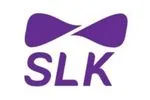Security Management as a Service (SECaaS) is a cloud-delivered approach to managing an organization’s entire security infrastructure—people, processes, and technologies—on a subscription or managed service basis. Instead of investing in costly on-premise systems and staff, businesses can outsource real-time threat monitoring, risk assessment, compliance management, and incident response to specialized providers. SECaaS offers scalable protection, expert oversight, and integrated tools without the burden of managing hardware or hiring a large internal team. As threats evolve rapidly, SECaaS ensures always-on vigilance, proactive detection, and adaptive risk mitigation—ideal for SMBs, distributed teams, or companies lacking in-house cybersecurity maturity.

Security Management is the strategic and operational process of protecting digital and physical assets against threats. It involves:
Identifying vulnerabilities, evaluating business impact, and prioritizing remediation actions.
Defining who gets access to what, when, and how—with enforcement using tools like MFA, IAM, and RBAC.
Establishing rules, SOPs, and governance for safe system use, aligned with regulatory frameworks.
Real-time logging, alerting, and behavior analysis to spot anomalies or breaches quickly.
Ensuring adherence to standards like ISO 27001, GDPR, HIPAA, and enabling smooth audit processes.
Educating users and stakeholders to reduce human error and insider threats.
Security management ensures an organization’s assets, data, and reputation are protected from ever-evolving cyber threats. It provides a structured approach to reducing risk, ensuring compliance, and responding quickly to incidents. Without it, businesses face increased exposure to data loss, regulatory penalties, and operational downtime.
Choosing the right SECaaS provider is a strategic decision that goes beyond technology. It requires alignment with your business risk profile, industry regulations, and IT maturity. A good provider becomes a trusted partner, offering proactive defense, clear communication, and fast response to threats.






















“As our IT support team, Infodot is quite reliable. No matter the size of the issue, we know that when we call or email, we will get a response back from your team. Your commitment to customer service is highly appreciated. Infodot has helped solve a lot of day-to-day IT challenges that were previously creating bottlenecks for us.

“As an early stage start-up, the engineering team was fully focussed on our cloud infrastructure and we lacked time and skill to manage office IT infrastructure. This created many bottlenecks for us – unreliable office internet connectivity, unnecessary expenditures due to lack of regular maintenance etc. Once Infodot took up the upkeep of our office IT infrastructure, we could immediately recognize the value they brought in. New internet connectivity architecture was proposed and implemented by Infodot first. It really helped solving our office internet connectivity issues and made our office network more secure. As a co-founder, I also would like to mention that they are accommodative and they understand an early stage start-up’s financial constraints. We are happy with their services and would definitely recommend them.”
We offer end-to-end security management services that adapt to your organization’s risk posture, compliance needs, and growth goals. From 24/7 monitoring to user training, our solutions are proactive, integrated, and aligned with your strategic priorities.
24×7 visibility into your IT environment
Identify and close known gaps in systems
Map operations to ISO, GDPR, HIPAA, etc.
Strengthen human firewall against phishing, leaks

SECaaS works by deploying a combination of cloud-based tools, managed services, and expert oversight to monitor, detect, and respond to cyber threats across your environment. It offloads security complexity and ensures enterprise-grade protection is available on-demand.
SECaaS onboarding begins with a detailed assessment of your current environment, risks, and compliance requirements. The provider then builds a customized security posture roadmap and initiates phased onboarding.
A well-implemented SECaaS model enhances resilience, reduces costs, and improves incident response times. It gives you access to enterprise-grade tools and expertise without needing in-house staff.
With SECaaS, organizations benefit from faster deployment, on-demand scalability, and reduced operational burden. It’s ideal for distributed, resource-constrained, or growing businesses seeking enterprise-grade security.
To succeed with SECaaS, align it with your internal policies, designate champions, and treat the provider as a strategic partner—not just a vendor.
Here’s a simplified view of how security management unfolds as a lifecycle of ongoing assessment, implementation, and improvement:
This phase involves identifying existing security gaps, understanding the threat landscape, and evaluating the organization’s overall risk profile. A comprehensive assessment helps prioritize action based on criticality and compliance needs.
After assessment, specific weaknesses and threat vectors must be identified. This includes internal misconfigurations, access loopholes, and unpatched systems that may pose security risks.
This step defines a structured security roadmap, including control frameworks, governance policies, tool selection, and resource allocation to address identified threats.
Put the planned controls and tools into operation. This includes configuring security tools, enforcing policies, setting up alerts, and integrating threat detection and response systems.
Security is not one-time—continuous monitoring is vital. This step tracks network activity, user behavior, system health, and external threats through real-time telemetry.
Rapid and well-structured response to incidents reduces damage and recovery time. Response includes alert triaging, containment, remediation, and communication.
After an incident, systems must be restored securely and services resumed with minimal disruption. Recovery also includes lessons learned and resilience improvement.
Security management is an ongoing lifecycle. Frequent audits and continuous improvement help organizations stay ahead of evolving threats and compliance mandates.

Infodot provides a comprehensive range of IT services, including co-managed support, cybersecurity, cloud solutions, and IT consultancy, designed to optimize your business operations.
Co Managed IT Service This Co managed IT Support & Services approach where a business
Ready to transform your IT? Book a call with Infodot to discuss your business needs and discover tailored Co-Managed IT solutions. Schedule your introductory call today and take the first step towards improved IT efficiency and business success.
A partnership for shared IT management.
Improved efficiency, security, scalability.
Startups, Small to medium-sized businesses ascross industries and domaind
Help desk, patch management, monitoring, security.
Yes, you can have tailored solutions.
Specialized knowledge in helpdes, patching, cloud, endpoint-security, infrastructure.
Robust security measures, and monitoring.
AWS, Azure, Google Cloud.
Variable, depending on services.
Proactive monitoring, vulnerability management.